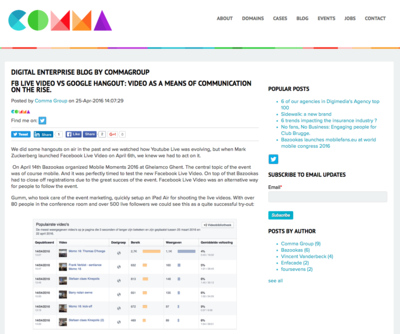
Thomas Kussé

Automated marketing platforms such as HubSpot and Marketo are important tools to turn visitors to your website into full-fledged leads, and ultimately customers. Most of these tools offer the possibility to set up a minisite within the system. A pity, but unfortunately: with such a HubSpot site, the possibilities are limited. It only offers a fraction of the flexibility of a fully-fledged CMS like Drupal.
Automated marketing platforms such as HubSpot and Marketo are important tools to turn visitors to your website into full-fledged leads, and ultimately customers. Most of these tools offer the possibility to set up a minisite within the system. A pity, but unfortunately: with such a HubSpot site, the possibilities are limited. It only offers a fraction of the flexibility of a fully-fledged CMS like Drupal.
Web agencies are therefore faced with the task of making communication between Drupal and marketing software as integrated as possible.
For the Commagroup website, Calibrate integrated Drupal with HubSpot. Let's take a closer look at how we washed that pig.
Our set-up starts with adding the Hubspot tracking code to the website.
The HubSpot module provides the possibility to link the site to the portal id of your HubSpot profile. Then enter the tracking code to complete the link.
Using the same module, we can set which HubSpot form the data should be sent to for each web form.
So we can copy the same form as in HubSpot via webforms, and from then on the results are sent to our own marketing platform.

The Comma marketers elaborate their blog articles in HubSpot. We then use the HubSpot COS API to retrieve that blog content in Drupal. Retrieved content can be enriched within Drupal in order to better integrate with the already existing context - in this case organic groups - on the website.